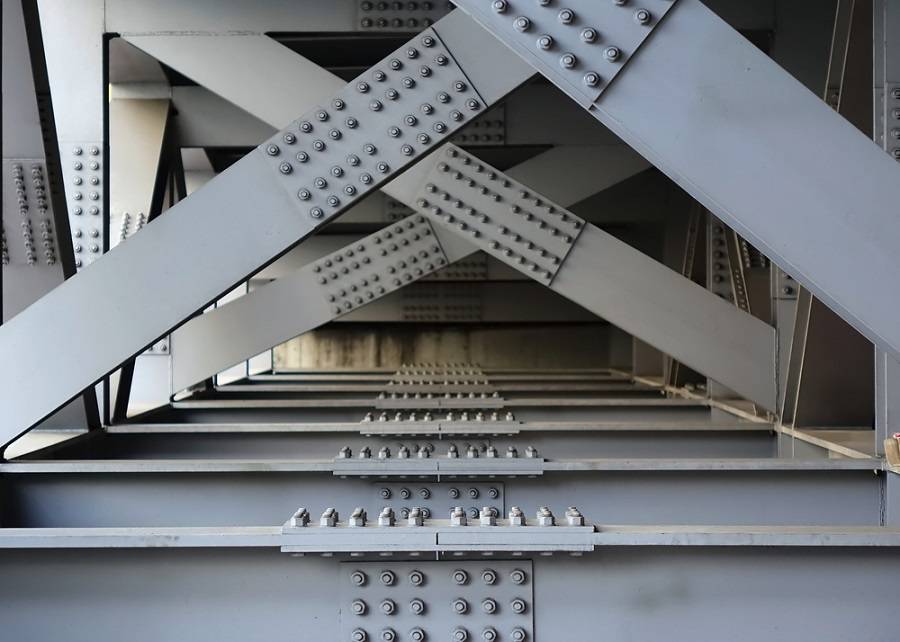Force transfer of HSFG bolts
The free body diagram of an HSFG connection is shown in Figure 14. It can be seen that the pretension in the bolt causes clamping forces between the plates even before the external load is applied. When the external load is applied, the tendency of two plates to slip against one another is resisted by the friction between the plates. The frictional resistance is equal to the coefficient of friction multiplied by the normal clamping force between the plates. Until the externally applied force exceeds this frictional resistance the relative slip between the plates is prevented. The HSFG connections are designed such that under service load the force does not exceed the frictional resistance so that the relative slip is avoided during service. When the external force exceeds the frictional resistance the plates slip until the bolts come into contact with the plate and start bearing against the hole. Beyond this point the external force is resisted by the combined action of the frictional resistance and the bearing resistance.
Design shear strength of HSFG bolts
HSFG bolts will come into bearing only after slip takes place. Therefore if slip is critical (i.e. if slip cannot be allowed) then one has to calculate the slip resistance, which will govern the design. However, if slip is not critical, and limit state method is used then bearing failure can occur at the Limit State of collapse and needs to be checked. Even in the Limit State method, since HSFG bolts are designed to withstand working loads without slipping, the slip resistance needs to be checked anyway as a Serviceability Limit State.
Slip Resistance
Design for friction type bolting in which slip is required to be limited, a bolt subjected only to a factored design shear force, Vsf, in the interface of connections shall satisfy the following (Cl.10.4.3): Vsf ?Vdsf where Vdsf = Vnsf / ?mf in which ?mf = 1.10 if slip resistance is designed at service load and
1.25 if slip resistance is designed at ultimate load. Vnsf = nominal shear capacity of a bolt as governed by slip for friction type connection, calculated as follows: Vnsf = ?f ne Kh Fo. where, ?f = coefficient of friction (slip factor) as specified in Table 20 of the code (?f < 0.55), ne =number of effective interfaces offering frictional resistance to slip, Kh = 1.0 for fasteners in clearance holes = 0.85 for fasteners in oversized and short slotted holes, and for fasteners in long slotted holes loaded perpendicular to the slot and 0.7 for fasteners in long slotted holes loaded parallel to the slot, Fo= minimum bolt tension (proof load) at installation and may be taken as 0.8 Asb fo where Asb= shank area of the bolt in tension and fo= proof stress (= 0.70 fub).
Vns may be evaluated at a service load or ultimate load using appropriate partial safety factors, depending upon whether slip resistance is required at service load or ultimate load.
Bearing strength
The design for friction type bolting, in which bearing stress in the ultimate limit state is required to be limited, (Vub = factored load bearing force) shall satisfy Vbf < Vnbf / ?mf (Cl.10.4.4 of the code), where ?mf= 1.25, Vnbf = bearing capacity of a bolt, for friction type connection, given by Vnbf =
2.2dtfup ? 3dtfyp where fup= ultimate tensile stress of the plate, fyp = tensile yield stress of the plate, d = nominal diameter of the bolt t = summation of thicknesses of all the connected plates experiencing bearing stress in the same direction. The block shear resistance of the edge distance due to bearing force shall also be checked.

